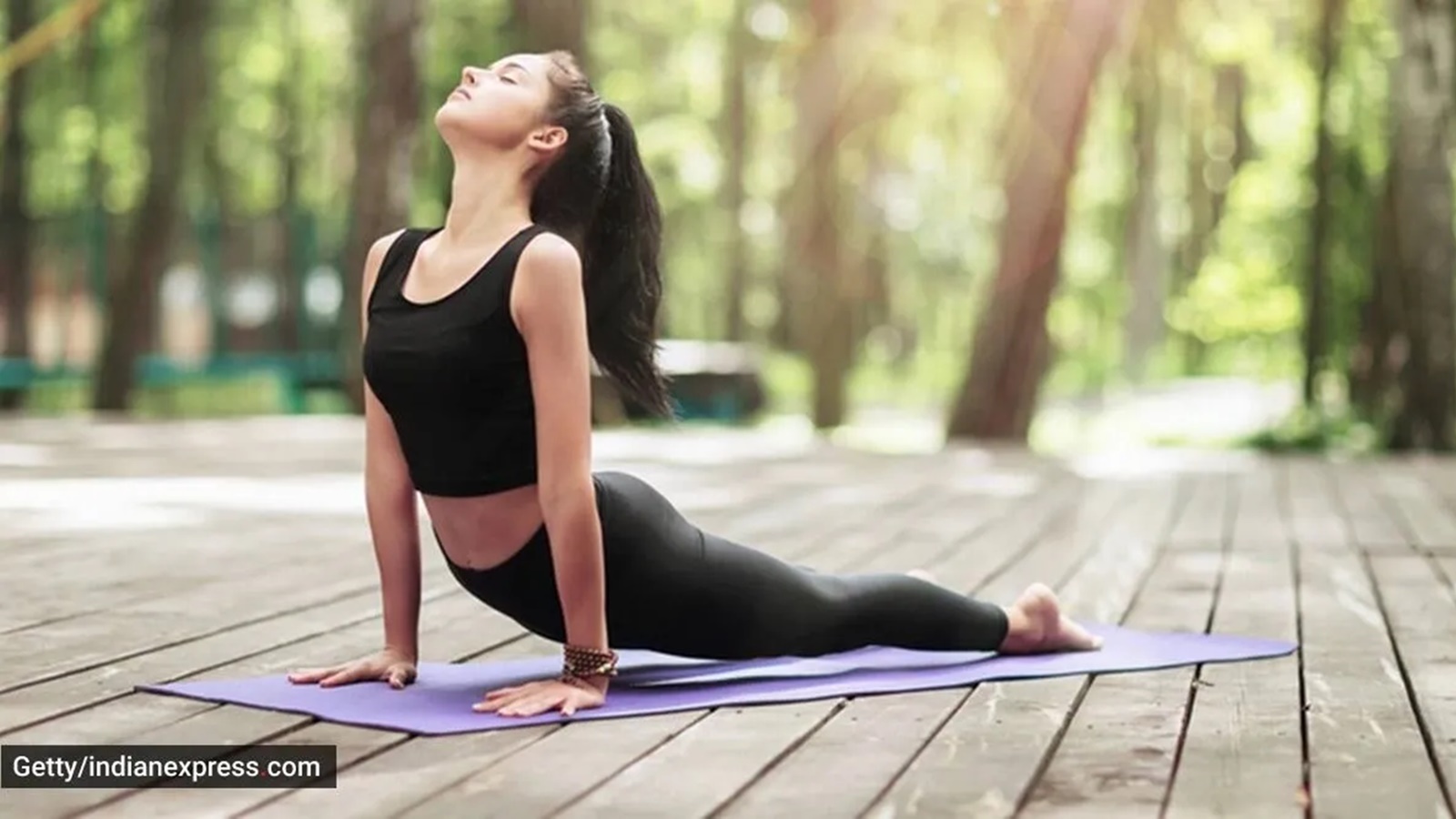📣 For more lifestyle news, click here to join our WhatsApp Channel and also follow us on Instagram
Indian Police Force actor Shilpa Shetty Kundra’s yoga practice is all about balance
While Ashwa Sanchalanasana is accessible to practitioners of various levels, modifications can be introduced to accommodate different abilities and needs, said fitness expert Garima Goyal
 Shilpa Shetty Kundra practices yoga for balance (Source: Shilpa Shetty Kundra/Instagram)
Shilpa Shetty Kundra practices yoga for balance (Source: Shilpa Shetty Kundra/Instagram) Indian Police Force actor Shilpa Shetty Kundra‘s yoga practice involves a lot of balance-improving asanas. The actor shared a glimpse of her practice which involved Ashwa Sanchalana Salamba Utthita Eka Padasana, or the high lunge pose. “It is a great balancing asana. It helps improve focus and concentration and also enhances the coordination between mind and body. It also improves the back’s and the hamstring’s flexibility,” shared Shilpa.
She also warned that people suffering from back pain or slip-disc, and pregnant women must avoid this asana.
Here’s what to know about Ashwa Sanchalanasana.
Ashwa Sanchalanasana, or the High Lunge Pose, is indeed a powerful yoga posture that combines strength, balance, and flexibility. “This dynamic pose is often incorporated into yoga sequences to promote stability, focus, and a sense of grounding. As with any yoga practice, it’s crucial to approach this pose mindfully, paying attention to proper alignment and listening to your body,” said fitness expert Garima Goyal.
How to perform it correctly?
*The starting point for Ashwa Sanchalanasana is the Mountain Pose (Tadasana), which serves as the foundation for many standing poses.
*Begin by standing tall with your feet together, grounding through all four corners of each foot. *Engage your thigh muscles, lift your chest, and lengthen your spine.
*From Mountain Pose, transition into a lunge position by stepping one foot back. “The key is to find a comfortable stride length that allows you to bend the front knee at a 90-degree angle, ensuring it aligns directly over the ankle,” said Goyal.
As you move into the lunge, keep the back leg straight and strong, with the toes pointing straight ahead or slightly turned outward for stability.
*To deepen the pose, engage your core muscles, lifting your torso upright. “This action not only helps in maintaining balance but also stretches the hip flexors of the back leg. Simultaneously, reach your arms overhead, creating a lengthening sensation from your fingertips to your back heel,” Goyal explained.
*The arms can be extended parallel to each other or brought together in a prayer position at the heart center, depending on your comfort and flexibility.
 Do you practice yoga? (Source: Getty Images/Thinkstock)
Do you practice yoga? (Source: Getty Images/Thinkstock)
Benefits
Apart from strengthening the muscles of the legs, particularly the quadriceps, and hamstrings, while also toning the glutes, the pose engages the core muscles which contributes to abdominal strength and stability.
Additionally, this pose opens up the hips, which can be especially beneficial for individuals who spend long hours sitting or have tight hip flexors. “The stretch in the hip flexors helps alleviate tension in the lower back and promotes better posture,” said Goyal.
From a mental perspective, the high lunge pose encourages focus and concentration. “Balancing on one leg while maintaining the integrity of the pose requires mindfulness and presence. The act of grounding through the standing foot connects you to the Earth, fostering a sense of stability and calm,” said Goyal.
Modifications
While Ashwa Sanchalanasana is accessible to practitioners of various levels, modifications can be introduced to accommodate different abilities and needs.
*For those with knee concerns, placing a blanket or mat under the knee of the back leg provides additional support.
*Alternatively, individuals can use yoga blocks to bring the floor closer when reaching for the ground or modify the arm position.
In specific, Salamba Utthita Eka Padasana roughly translates to a supported extended one-legged pose where “Salamba” implies support, “Utthita” means extended, and “Eka Pada” refers to one leg. “It involves the use of props or support to enhance stability and balance while extending one leg,” Goyal mentioned.
The benefits of Salamba Utthita Eka Padasana are similar to those of Ashwa Sanchalanasana, emphasising balance, flexibility, and strength. “This variation, however, places additional emphasis on the extension of one leg, which can enhance hamstring flexibility and improve overall leg strength,” mentioned Goyal.
Contra-indications
As with any physical activity, it’s essential to practice these poses with awareness and respect for your body’s limitations. “If you’re new to yoga or have any pre-existing health conditions, consider consulting with a certified yoga instructor or healthcare professional to ensure that these poses are suitable for your individual needs,” said Goyal.
View this post on Instagram
📣 For more lifestyle news, click here to join our WhatsApp Channel and also follow us on Instagram


Photos
- 01
- 02
- 03
- 04
- 05
























